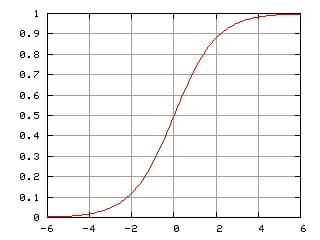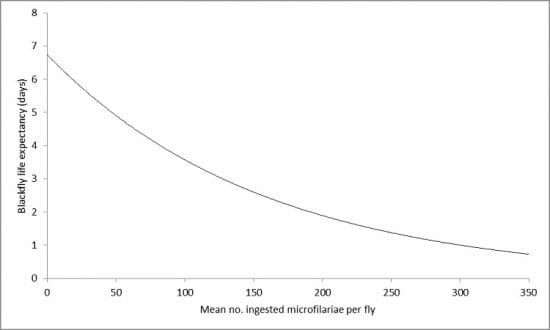Density Dependent Factors Definition
Density dependent factors affect a population through increasing or decreasing birth and death rates, in a way that is directly related to the density of the population. Unlike density independent factors, which are not tied to the population density, density dependent factors change how they affect the population as the population changes in size. Like density independent factors, density dependent factors are unique for every population, and density dependent factors for one species or population may not be the same for all populations.
Typically, density dependent factors are biological factors used by the population as a resource. These can be things like food, shelter, or other limited resources. Density dependent factors cause variable changes in the population as its density changes. When the population is small, these factors typically favor increased birth rates and lower death rates, allowing the population to expand. When the population is large and dense, these factors become limited and decrease the birth rate while raising the death rate. This tends to make populations experiencing density dependent factors to show logistic growth, like in the graph below.

As the graph shows, the population increases rapidly for a time. But, as the density dependent factors change their effects on the population, the growth slows and the population size tends to level off. The various factors which cause this leveling off in the population are density dependent factors. There are usually many density dependent factors involved for a given population. Below are some good examples.
Examples of Density Dependent Factors
Watching Grass Grow
While the saying “watch the grass grow” is often used as a euphemism for boredom, scientists have actually done just that. What they found was a perfect example of density dependent factors affecting the growth rates of an organism.
At first, the scientists had and empty field, freshly tilled with no plants in it. They seeded the field carefully, placing seeds far apart to simulate a low population density. At first, the plants grow exponentially. For several generations, they had all the space and nutrients they needed to grow as fast as they could. Over time, the spaces between the plants filled in, until the field represented a high population density.
At this point, various density dependent factors in the environment switched from positively affecting the plants to negatively affecting them. While nothing changed in the factors themselves, the population became to dense and the resources became source. Consider the resources a plant needs: sunlight, moisture and nutrients. For a plant, all of these resources are tied to the area a plant has access to. If a plant has sole access to a large area, it will receive more nutrients, water and sunlight. As the plants start to crowd in on each other, each plant will have limited access to these valuable resources. At this point, the growth and reproduction of all plants in the population is slowed, and the population gets close to the point of equilibrium, all other things remaining equal.
Fish in a Tank
Likewise, a fish tank is no different than a patch of grass. There are certain density dependent factors which will limit and affect the population size of the organisms in the tank. In a fish tank, the factors are slightly different. Fish need food, oxygen, and a way to detoxify water of their own wastes. These factors are density dependent because they will become drastically more limiting as more fish are added to the fish tank.
In a tank with a low density of fish, each fish has its own space, and has plenty of oxygen. The filter and aerator add oxygen to the water as fast as the fish can consume it, so there is plenty. Likewise, the fish require little food as a collective group, and produce little waste. Their waste can easily be filtered out by the filter, and the owner of the tank can easily distribute food to all the fish. Because there is plenty of room and food, the fish can all get some.
Now consider a tank with an extremely high density of fish, and you can see how these density dependent factors now negatively affect the population growth. In this case, each fish will barely have any space. The amount of oxygen in the water will be depleted, as the filter and aerator cannot keep up with the number of gills in the tank. This reduces the energy and vigor each fish has, reducing their chances of surviving and reproducing. Further, as the fish are so crowded, it doesn’t matter how much the owner feeds them, some fish simply do not get fed. The waste produced by the fish, along with the fish which die from starvation, are too much for the filter to handle and the tank will soon become a stinky mess. The density dependent factors in this case ensure that the population cannot exceed certain limits.
Parasites and Hosts
A well-studied example of density dependent factors comes in the form of parasites and their hosts. When a parasite infects a host, it uses the host’s resources and injures the host. With one parasite, most host’s are fine. It is in the parasite’s best interest to not kill the host, as it can live longer and reproduce more. However, it is also in other parasites’ interest to invade the host. As more and more parasites invade a single host, the host has less and less of a chance of survival. Thus, the parasites are limited by the density dependent factors which keep their host alive. This can be seen in the graph below.

This graph shows the life expectancy of a certain species of fly after it ingests different amounts of parasites. As the graph clearly shows, the flies which ingest the fewest parasites live the longest, with a steep drop-off as more parasites enter the system. The flies have a certain amount of energy, nutrients, and damage tolerance. As more parasites enter the system, these density dependent factors don’t necessarily curtail the population density of the parasites. Rather, they kill the host destroy the entire population of parasites. Parasites are opportunistic organisms, and tend to push the limits of their environment in favor of breeding the most.
Quiz
1. Which of the following is a density dependent factor for humans?
A. Food
B. Hurricanes
C. Solar Flare
2. A volcano erupts on the island of Hawaii, killing off many local organisms in the path of the lava flow. Which category can the volcano go into?
A. Density Independent Factors
B. Density Dependent Factors
C. Neither
3. Many people have forecasted that because of the exponential growth of humans over the last several decades, that the trend will continue and we will overshoot our carrying capacity. Why is this unlikely?
A. It is VERY likely. We’re DOOMED!
B. Density dependent factors drive logistic growth.
C. We will get hit by an asteroid before that time.
References
- Cain, M. L., Bowman, W. D., & Hacker, S. D. (2008). Ecology. Sunderland, MA: Sinauer Associates, Inc.
- Feldhamer, G. A., Drickamer, L. C., Vessey, S. H., Merritt, J. F., & Krajewski, C. (2007). Mammology: Adaptation, Diversity, Ecology (3rd ed.). Baltimore: The Johns Hopkins University Press.
- Kaiser, M. J., Attrill, M. J., Jennings, S., Thomas, D. N., Barnes, D. K., Brierley, A. S., & Hiddink, J. G. (2011). Marine Ecology: Processes, Systems, and Impacts. New York: Oxford University Press.
